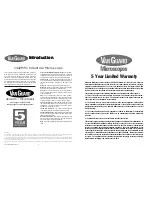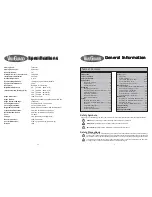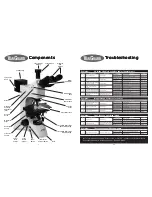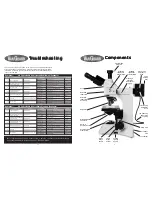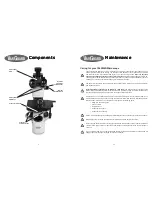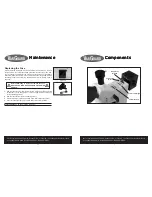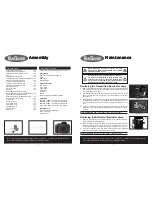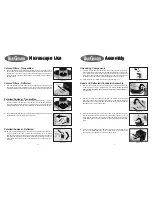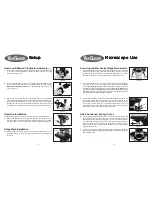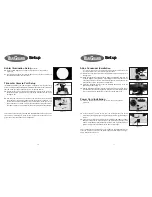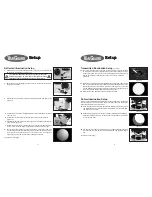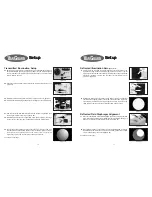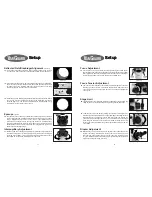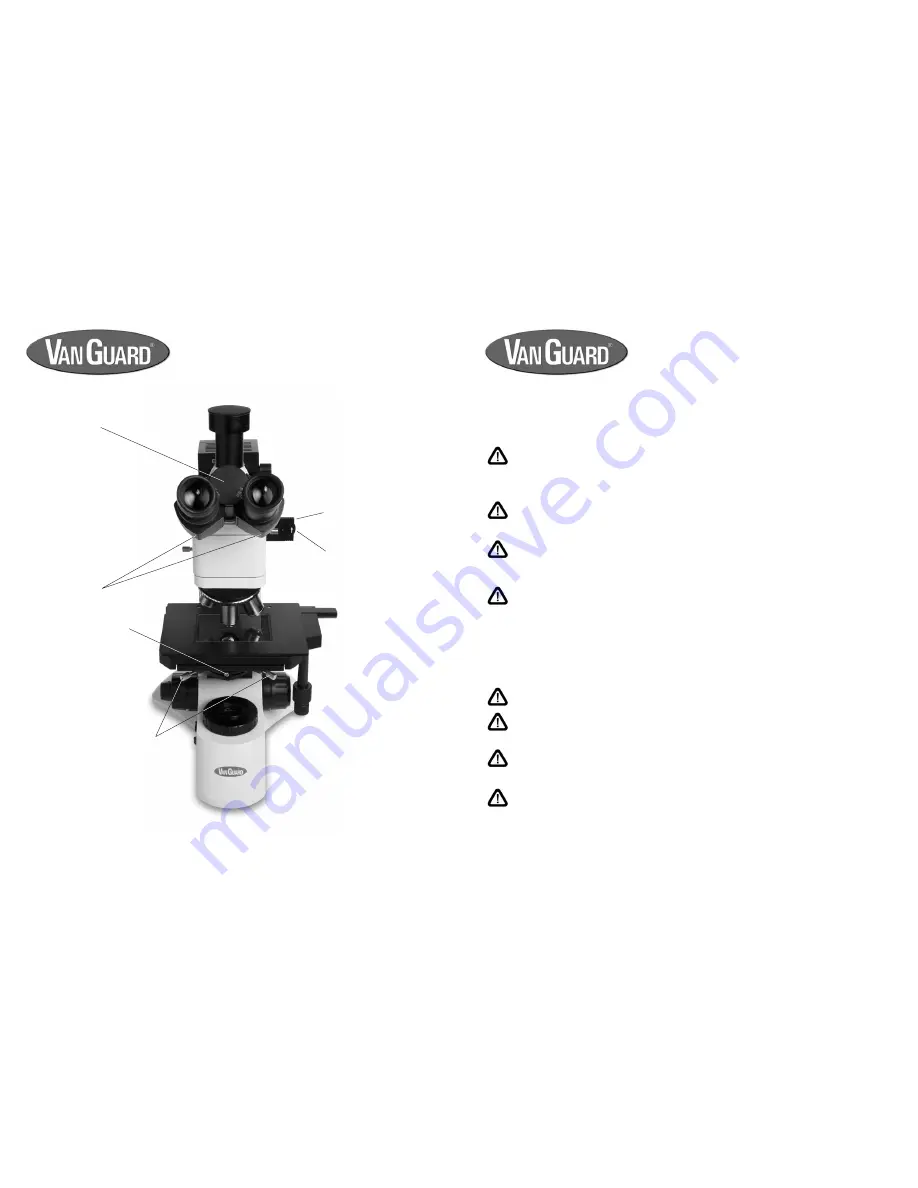
Components
Components
Components
Components
Components
6
23
Maintenance
Maintenance
Maintenance
Maintenance
Maintenance
The eyepieces and objectives on this microscopes are coated. They should never be wiped while dry as
any dirt or dust will scratch the coating. The surfaces should be blown off and cleaned with an air-bulb
and camel-hair brush. It is recommended to then use a lens cleaning solution.
Never use anything
other than lens cleaning solution on any optical component.
Apply with a cotton swab for a minimum
of wetting, then wipe the surface clean with a quality lens tissue. These items are all available in our lens
cleaning kit, see the Optional Accessories page for ordering information.
The same care instructions apply to all optical components of this microscope, including the illuminator
and condenser lenses.
Never dissasemble objectives in an attempt to clean them.
The placement and orientation of the
internal lenses are absolutely critical to their performance, therefore keeping the exterior surfaces clean
to prevent contaminate ingress is essential to the longevity of the objectives.
All other parts can be cleaned with a paper towel and mild detergent. It’s not recommended to use
rubbing alcohol for cleaning as it can damage the painted surfaces. Also be aware that rubbing alcohol
will break down lubricants, so be careful when cleaning near the following parts:
à
Stage rack and pinion gears
à
Focus controls
à
Objective turret
à
Condenser rack gears
à
Condenser rack controls
Xylene, since it breaks down the bonding material holding the lenses, should never be used as a cleaner.
Periodically your microscope should be fully serviced by a qualified service technician.
In order to keep dust and debris out of the optical pathways, always keep the camera port and eyetubes
covered (with either eyepieces or dust caps), and always use the dust cover when the microscope is
not in use.
It’s not recommended to use a compressed gas canister as the liquid propellent can escape and will
damage the optical coatings if sprayed onto the lens surfaces.
Caring for your 1442MMi Microscope
Condenser
Centering Knobs
Condenser Set Knob
Reflected
Illumination
Polarizer Slider
Polarizer
Rotation Wheel
Interpupilliary
Adjustment
Interpupilliary
Scale


